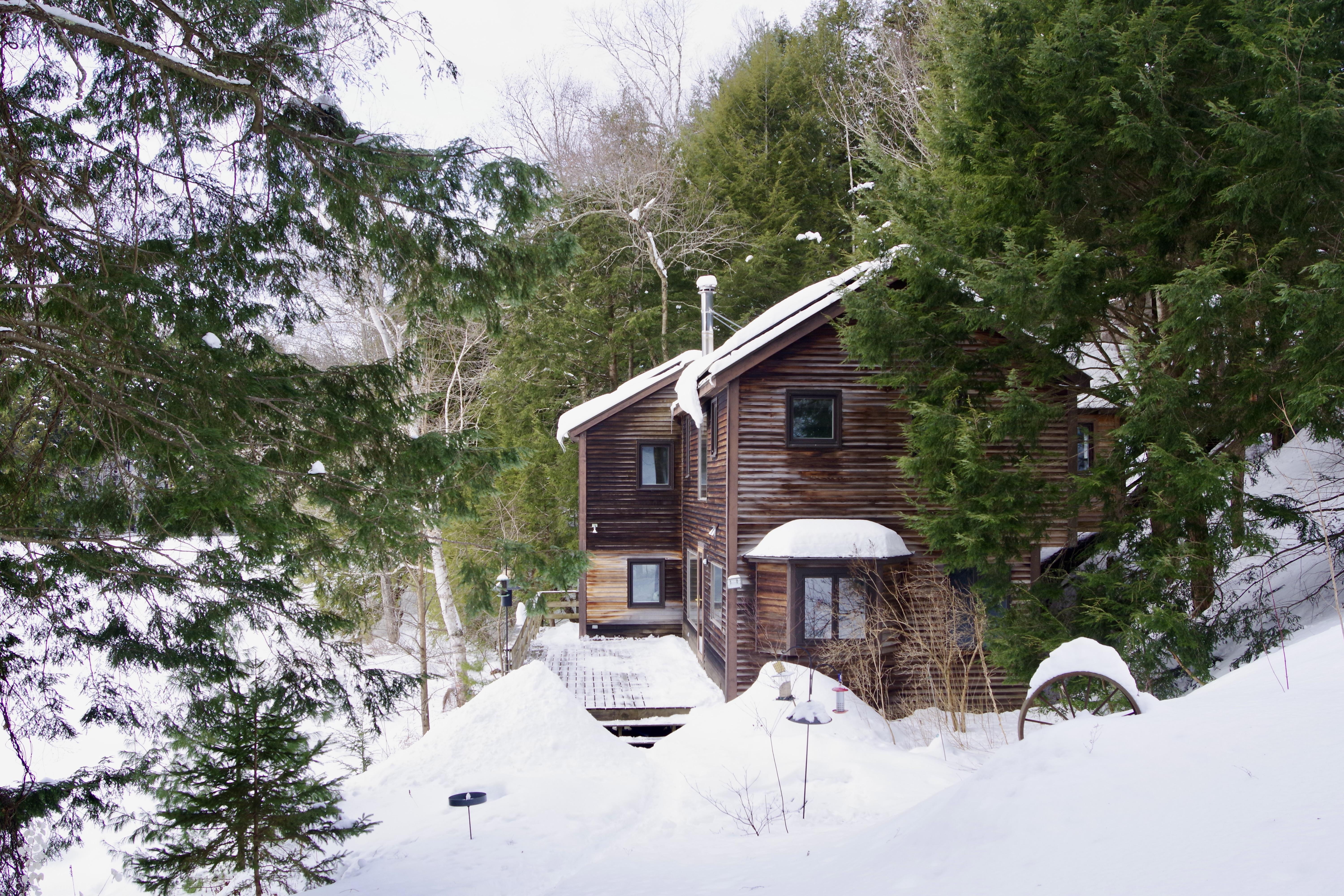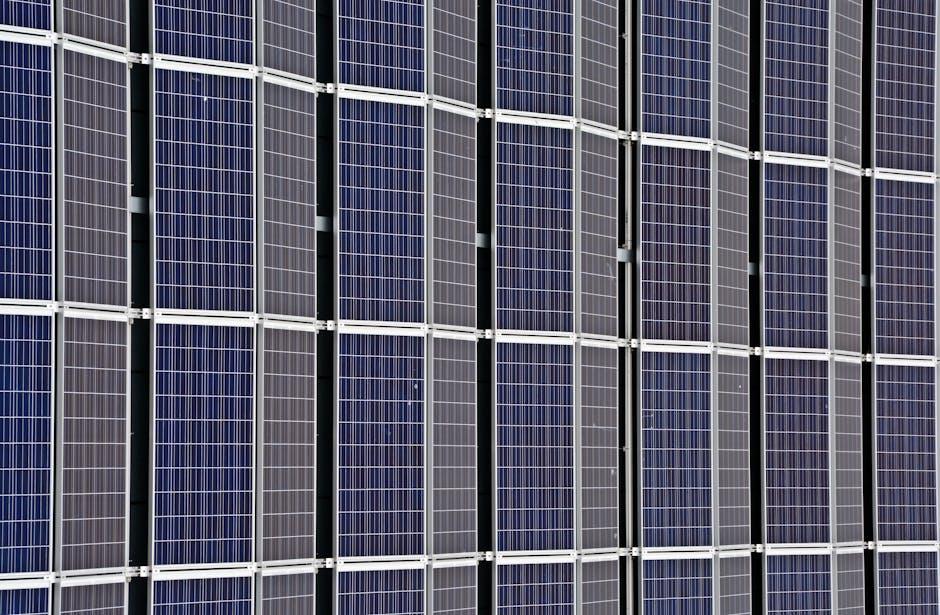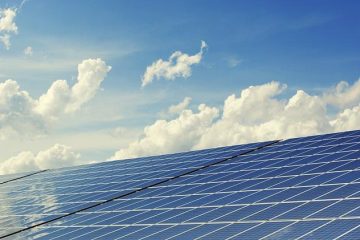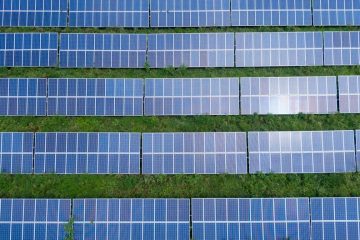Table of Contents
- Understanding the Benefits of Solar Panels in Greenhouse Environments
- Maximizing Energy Efficiency with Solar Panel Integration
- Choosing the Right Solar Technology for Your Greenhouse
- Designing an Optimal Layout for Solar Panel Installation
- Cost Considerations and Financial Incentives for Solar-Powered Greenhouses
- Q&A
- Closing Remarks


Understanding the Benefits of Solar Panels in Greenhouse Environments
Implementing solar panels in greenhouse environments presents a multitude of advantages that extend beyond mere cost savings. One of the foremost benefits is energy efficiency. By harnessing solar energy, greenhouses can significantly reduce their reliance on external power sources. This not only lowers electricity bills but also promotes sustainability by decreasing the carbon footprint associated with traditional energy use. Greenhouses equipped with solar panels can generate their own electricity, making them more self-sufficient and resilient against fluctuating energy prices.
Moreover, solar panels can contribute to optimal climate control within the greenhouse. Advanced solar technologies, such as solar heating systems, can help maintain consistent temperatures by warming the air or soil, effectively reducing the need for additional heating methods. This can lead to healthier plant growth and higher yields. Additionally, during the summer months, the energy produced can power ventilation systems or cooling fans, ensuring that plants remain in their ideal growing conditions regardless of external weather influences.
integrating solar technology in greenhouses enhances overall economic viability. Initial investments in solar infrastructure may seem daunting, but many governments offer incentives and rebates that can alleviate these costs. Over time, the savings on energy bills combined with potential government support can make solar a profitable venture. Furthermore, as consumers increasingly prioritize sustainability, greenhouses utilizing solar energy can market themselves as eco-friendly, appealing to a growing demographic that values environmental responsibility.
Maximizing Energy Efficiency with Solar Panel Integration
Integrating solar panels into a greenhouse can revolutionize how energy is utilized in the cultivation process. By harnessing sunlight, not only do you create a sustainable energy source, but you also minimize utility costs. This method allows for optimal usage of space and resources, ensuring that your greenhouse remains operational year-round. Some key benefits include:
- Sustainable Energy Production: Solar panels convert sunlight into electricity, powering fans, lights, and heating systems efficiently.
- Reduction in Carbon Footprint: By relying on renewable energy, you lessen dependence on fossil fuels, promoting a greener environment.
- Cost-Effectiveness: Lower energy bills lead to higher profit margins, making your farming practices more financially viable.
Additionally, optimizing energy consumption through strategic solar panel layout is crucial. Positioning panels at an angle can maximize their exposure to sunlight, enhancing energy production during the day. This has a significant impact on the greenhouse’s microclimate, allowing for controlled temperature management essential for plant growth. Consider the following table that highlights optimal panel orientations and their benefits:
| Panel Orientation | Sun Exposure | Energy Gain |
|---|---|---|
| South Facing | Maximum Sunlight | High |
| East Facing | Morning Sun | Moderate |
| West Facing | Evening Sun | Moderate |
Lastly, maintaining the solar panel system is essential for maximizing efficiency. Regularly cleaning the panels to remove dust and debris, along with periodic inspections, can significantly enhance their performance. Additionally, integrating energy storage solutions, such as batteries, can provide flexibility for energy usage during non-sunny periods, ensuring continuous operation. By taking these proactive steps, you can ensure that your greenhouse not only thrives through solar energy but also becomes a model for sustainable farming practices.


Choosing the Right Solar Technology for Your Greenhouse
When integrating solar technology into your greenhouse, it’s essential to evaluate the various options available. Two main types of solar energy systems dominate the market: photovoltaic (PV) panels and solar thermal systems. Each has distinct features suited for specific greenhouse applications. Photovoltaic panels convert sunlight directly into electricity, making them ideal for powering lights, fans, and irrigation systems. Conversely, solar thermal systems harness the sun’s heat to warm water, which can then be circulated to maintain optimal temperatures for plant growth.
The benefits of each technology depend on your greenhouse’s needs and local climate. Consider the following factors when making a decision:
- Energy Requirements: Assess how much energy your greenhouse consumes to determine the size and type of solar system required.
- Climate Conditions: Analyze your region’s weather patterns, as some systems perform better in specific conditions (e.g., PV panels in sunny climates).
- Space Availability: Evaluate the physical space you have for installation; PV panels can be mounted on rooftops, while solar thermal systems require more ground area.
Additionally, it’s important to consider the financial aspects of your solar technology choice. An analysis of potential savings from energy bills and available incentives can be insightful. Below is a simple comparison table to help you visualize the key financial aspects of each technology:
| Technology | Initial Investment | Long-term Savings | Incentives |
|---|---|---|---|
| Photovoltaic Panels | High | Medium to High | Tax credits, rebates |
| Solar Thermal Systems | Medium | Medium | State incentives |


Designing an Optimal Layout for Solar Panel Installation
When planning the layout for solar panel installation on a greenhouse, several factors come into play to ensure both efficiency and aesthetics. A well-structured design allows for maximum sunlight exposure while also maintaining the functionality of the greenhouse itself. Consider the following elements:
- Orientation: Position the solar panels at an angle that captures the most sunlight throughout the day. Typically, a south-facing orientation is ideal in the Northern Hemisphere.
- Spacing: Adequate spacing between the panels is essential for minimizing shade and maximizing energy absorption. Ensure that there’s enough clearance for maintenance and airflow.
- Integration: Think about how the panels integrate with the greenhouse’s structure. Rooftop installations can save space while vertical panels on the sides can enhance aesthetic appeal and productivity.
Another crucial aspect is the selection of materials and technology for both solar panels and the greenhouse. Opt for lightweight yet durable panels to avoid compromising the structure’s integrity. Consider using solar glass that doubles as greenhouse glazing, providing both energy generation and efficient insulation. Additionally, choosing high-efficiency panels with good thermal properties can help maintain optimal growing conditions inside:
| Panel Type | Efficiency (%) | Notes |
|---|---|---|
| Monocrystalline | 15-22% | High efficiency in compact spaces |
| Polycrystalline | 13-16% | Cost-effective but less efficient |
| Thin-Film | 10-12% | Lightweight, flexible, ideal for unique shapes |
it’s important to think about the long-term sustainability of your solar greenhouse. Implementing a monitoring system can help you track energy production and consumption, ensuring the panels are operating at peak efficiency. Consider adding solar battery storage to harness energy for nighttime use, particularly for heating and cooling systems within the greenhouse. This not only maximizes your energy usage but also contributes to a more sustainable growing environment:
- Energy Recovery: Utilize excess energy for heating and lighting during off-peak hours.
- Smart Technology: Incorporate automated systems for energy management and greenhouse operations.
- Future Expansion: Design layouts that allow for easy scalability if you decide to increase your solar capacity.


Cost Considerations and Financial Incentives for Solar-Powered Greenhouses
When considering the financial aspect of integrating solar power into greenhouse operations, it’s crucial to evaluate both the upfront and ongoing costs. Initial expenses can include the purchase and installation of solar panels, inverter systems, and necessary structural modifications to support solar technology. This investment can be significant, yet it lays the groundwork for long-term savings. Factors such as the size of the greenhouse, location, and energy needs will affect the overall expenditure. A thorough cost-benefit analysis can help determine how quickly these investments can result in a return.
To further alleviate the financial burden, various financial incentives are available to greenhouse owners who adopt solar technology. These can include:
- Federal tax credits—Currently, many regions offer substantial tax deductions for solar investments, allowing for a reduced tax liability.
- State and local rebates—Various states provide rebates to encourage renewable energy adoption, which can substantially cut initial costs.
- Grants and loans—Specific programs, particularly for agricultural enterprises, can facilitate financing options with favorable terms.
Moreover, the integration of solar power can lead to ongoing savings that enhance the overall financial viability of a greenhouse. Solar energy can drastically reduce electricity bills, with many operations experiencing up to a 50% decrease in energy costs. To encapsulate the potential returns on investment, here’s a simple overview:
| Item | Estimated Cost/Savings |
|---|---|
| Initial Solar Panel Investment | $20,000 – $50,000 |
| Annual Savings on Energy Bills | $2,000 – $5,000 |
| Tax Credit (approx.) | $6,000 - $15,000 |
| Payback Period | 5 - 10 years |
This financial framework emphasizes the long-term advantages of utilizing solar-powered systems in greenhouses, making them an increasingly viable energy solution for sustainable agriculture.
Q&A
Q&A: Solar Panels for Greenhouses
Q1: What are solar panels, and how do they work in a greenhouse setting? A1: Solar panels are devices that convert sunlight into electricity. In a greenhouse, they’re typically installed on the roof or nearby to harness solar energy. This electricity can be used to power heating systems, ventilation fans, and grow lights, thereby creating an optimal environment for plants to thrive. Essentially, solar panels help reduce dependence on traditional energy sources while lowering operational costs.Q2: What are the benefits of using solar panels in a greenhouse? A2: The benefits are numerous! First and foremost, they lower energy costs by providing a renewable energy source. Solar panels also reduce the greenhouse’s carbon footprint, making your gardening practices more sustainable. Additionally, having an independent power source can help ensure that your greenhouse operations continue uninterrupted, even during power outages. Plus, it can increase the value of your property.
Q3: Do solar panels work during winter months when sunlight is limited? A3: Yes, solar panels can still generate electricity during winter, albeit at reduced efficiency. Snow can insulate the panels and allow for better energy production once the snow melts, while shorter daylight hours can be compensated by using high-efficiency panels. It’s always a good idea to pair solar power systems with appropriate energy storage solutions, such as batteries, to ensure consistent energy availability throughout the year, regardless of the weather.
Q4: What types of solar panels are best suited for greenhouses? A4: There are mainly two types of solar panels: monocrystalline and polycrystalline. Monocrystalline panels tend to be more efficient and space-efficient, making them great for limited roof areas. Polycrystalline panels are usually more cost-effective but require more space for the same amount of energy production. Ultimately, the choice depends on your specific needs, space availability, and budget considerations.
Q5: Can I integrate solar panels with existing greenhouse systems? A5: Absolutely! Solar panels can be integrated with various greenhouse systems, from heating and cooling to automated irrigation. Professional installers can help design a system that fits seamlessly with your existing infrastructure. Whether you’re starting fresh or retrofitting an existing greenhouse, the integration can enhance efficiency while maintaining the health and productivity of your plants.
Q6: Are there any downsides to using solar panels in a greenhouse? A6: While solar panels offer many advantages, there are some considerations. The initial investment can be significant, although this is often recouped over time through energy savings. Proper placement is crucial; if panels are shaded by trees or other structures, efficiency will diminish. Maintenance is also necessary to ensure optimal performance, especially in regions with heavy snowfall or dust accumulation.
Q7: How long does it take to see a return on investment with solar panels? A7: The payback period for solar panels can vary widely, typically ranging from 5 to 15 years depending on the system size, local energy prices, and available incentives. Many growers find that the long-term savings on energy costs and the potential increase in crop yield due to more controlled conditions can offset the initial expenses significantly.
Q8: Are there any government incentives for installing solar panels in greenhouses? A8: Yes, many regions offer incentives such as tax credits, grants, or rebates for renewable energy installations, including solar panels. It’s worthwhile to check with local and state energy agencies or agricultural departments to discover available programs that can further offset costs, making the transition to solar energy more accessible and economically attractive.—Q9: Can solar panels affect the environment positively? A9: Definitely! By minimizing reliance on fossil fuels, solar panels contribute to cleaner air and a reduction in greenhouse gas emissions. Additionally, solar-powered greenhouses promote a sustainable approach to agriculture, often leading to better soil health and biodiversity in the surrounding ecosystem.
Q10: How can I learn more about implementing solar panels in my greenhouse? A10: The first step is to research reputable solar energy providers in your area who specialize in agricultural solutions. Consider attending workshops or webinars dedicated to sustainable agriculture and renewable energy. Speaking with other greenhouse operators who have made the switch can also provide valuable insights and inspiration for your own solar panel journey.—This Q&A section aims to provide succinct and informative answers to common queries regarding the integration of solar panels into greenhouse environments, helping readers navigate the decision-making process with clarity.




0 Comments